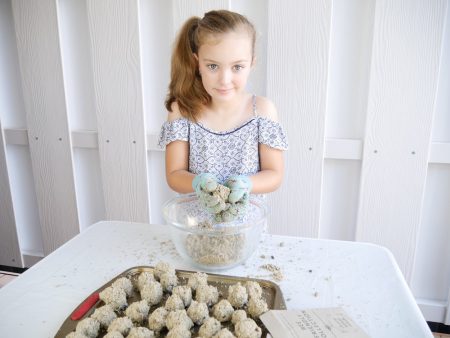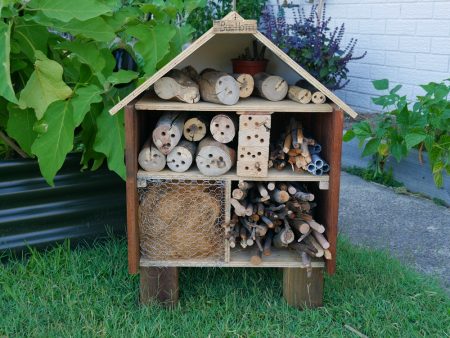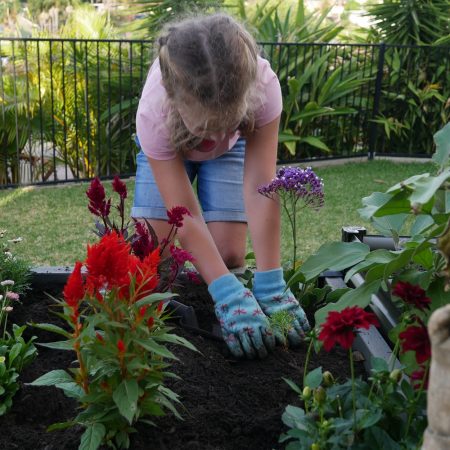By Becky Searles – Family Garden Life
In celebration of World Honey Bee Day, we thought it was the perfect time to get buzzing in the garden with the kids. It’s a great reminder for our kids to recognise the important role a honey bee plays in our food security and sustainability. It’s also important we bee-careful in the garden, so bee-fore you head out into your garden, make sure your bee-safety is top of mind.
Bee Safety
- Avoid wearing bright colours. Bees will think you are a flower and will be attracted to you. There is a good reason why beekeepers wear white!
- Be careful what food and drink you take out into the garden. Bees and wasps are attracted to sweet things and will head into your drinking cup or be attracted to fruit scraps left lying around on the ground.
- Remember to cover your feet, it is very easy to step on a bee which is feeding on nectar from clover. This time of year, you’re likely to find clover in your lawn.
- Don’t attempt to swat away a bee. This will only anger them and they will become defensive assuming you are attacking them. This is when a bee will sting. It is better to stay still or move away calmly from the bee. You’ll find this a valuable lesson to teach the kids.
- Protect your body from stings or spider bites by wearing protective clothing. When you are gardening long pants and full sleeves are a good idea as are a good pair of gardening gloves.
Did you know that because bees are one of the major pollinators they are in fact responsible for our food security, sustainable agriculture and biodiversity? It’s a massive responsibility they have to keep us going. Bees also contribute to reducing climate change and protecting our environment so whilst we need to practice bee-safety in our garden, we need these little guys just as much as they need us.
Together, we can work towards protecting our bees and their habitats to ensure our amazing bees live happy healthy lives, and you can get started in your very own family garden.
Let’s have a look at some fun ways you can bring bees into your garden.

Bee-friendly seed ball
This is a fun project which focuses on creating a food supply for our bees.
What you need:
- 2 cups of bentonite clay
- 1 cup of fine organic soil
- ½ cup of organic fertiliser
- 1 pack of Throw Some Seeds – bee-friendly seeds
- water
- tray for drying
Method:
- Add clay, soil and fertiliser to a bowl and mix well
- Then add your bee-friendly seeds
- Start to add small increments of water at a time
Your goal is to get a play-doh like consistency so keep adding water until you achieve this. Using your hands, roll golf ball sized balls and place on a tray. The tray should be placed in a cool, dry spot overnight.
Note: Don’t compress them too much or the seeds will find it hard to germinate.

Build a bee hotel
Building a bee hotel helps provide cover and short-term accommodation for bees and other beneficial insects when they arrive. It’s also a good idea to provide food for the insects by planting flowers close by their accommodation and a tray of water as well.
For bees, it’s a cosy place to stay out of the weather, and for other beneficial insects having a place for them to stay encourages organic pest control.
Organic pest control methods are important for the health of our bees through the eliminate of using pesticides on our crops. Some beneficial insects assist in the removal of unwanted pests.
Beneficial insects in a food garden include ladybirds, lacewing, parasitic wasp, praying mantis, hoverflies and of course our bees.

Flower garden
You can include certain flowers in your veggie garden that will attract beneficial insects which are needed to pollinate our crops, and honey bees are the most valuable in performing this process. These are some of my favourite flowers to attract pollinators:
- Sunflowers. Which are an excellent source of both pollen and nectar, are easy to grow and look magnificent in any garden. They are annual plants and flower from Summer to Autumn.
- Catnip. The flower is said to bloom for long periods of time, so it helps the bees by conserving their energy not having to go far to feed.
- Chives. The chive herb offers an amazing flower if you let it go to seed. The purple coloured flower ball signals to the bees through scent, colour and silhouette of the flower that a free meal awaits below.
- Borage offers a high level of both pollen and nectar, in fact, it is said that the flowers refill with nectar very fast. No wonder the bees love them!
- Open-centred dahlia. This flower has an enormous landing pad for the bees and this makes access to the pollen and nectar easily accessible. Plus they just look spectacular in any garden.
- Lavender is a must in every bee-attracting garden and offers an abundance of both pollen and nectar for the bees. Flowering from Spring into Summer and some will also flower again in Autumn.
Many flowers are great for attracting pollinators, including the plants that belong to the daisy family. These flowers provide more bang for your buck in terms of pollen.
Next time your out in the garden, think about what you can do to encourage bees back into your family garden. Encourage your kids to watch and learn how the bee’s go about their work in the garden. It’s only through education we will protect these unsung heros.
They are our life savers after all.
You might also like to read:
Children and Our Beautiful World
Play Ideas to Develop Friendships









